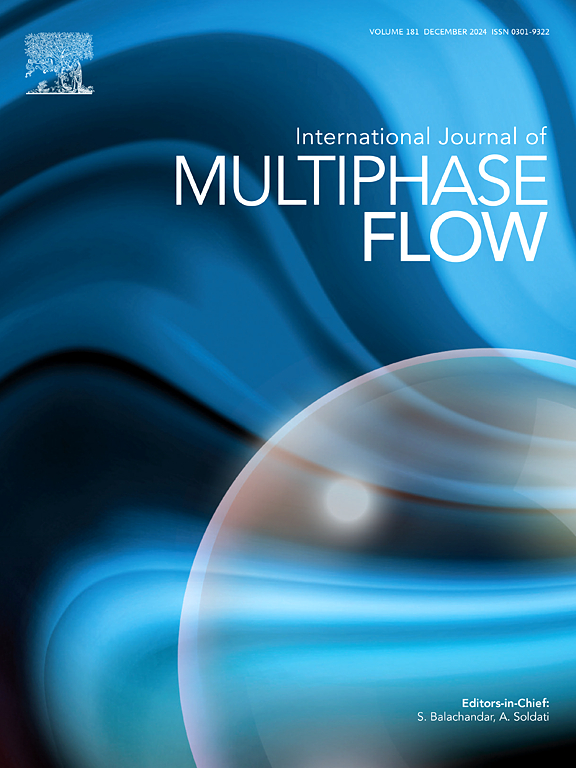Elucidation of pressure wave attenuation due to cross-sectional area change in bubbly flow
IF 3.6
2区 工程技术
Q1 MECHANICS
International Journal of Multiphase Flow
Pub Date : 2025-01-22
DOI:10.1016/j.ijmultiphaseflow.2025.105138
引用次数: 0
Abstract
Pressure waves in bubbly flows are attenuated by various factors such as liquid viscosity and compressibility. However, existing studies have not elucidated the attenuation mechanism and lack quantitative comparisons. This study investigates the weakly nonlinear propagation of pressure waves in liquids containing spherical bubbles with varying cross-sectional areas. The Korteweg–de Vries–Burgers equation describing the wave propagation was derived using the singular perturbation method for averaged equations based on a two-fluid model. The study revealed that the attenuation is influenced by the cross-sectional area change, liquid viscosity and compressibility, and wall friction force. Second, the effects of the cross-sectional area change contribute to the amplification and attenuation of the wave amplitude when the cross-sectional area is converging and diverging, respectively. Furthermore, using the converging–diverging tube (i.e., Venturi tube) as the primary example, the study found that for large cross-sectional area change, the contribution to attenuation was the most significant, followed by liquid viscosity, compressibility, and wall friction force. This underscores the importance of the rate of change as a key parameter in cross-sectional area. This study established a new attenuation term for cross-sectional area change, which is useful in both basic and practical viewpoints.

求助全文
约1分钟内获得全文
求助全文
来源期刊
CiteScore
7.30
自引率
10.50%
发文量
244
审稿时长
4 months
期刊介绍:
The International Journal of Multiphase Flow publishes analytical, numerical and experimental articles of lasting interest. The scope of the journal includes all aspects of mass, momentum and energy exchange phenomena among different phases such as occur in disperse flows, gas–liquid and liquid–liquid flows, flows in porous media, boiling, granular flows and others.
The journal publishes full papers, brief communications and conference announcements.

 求助内容:
求助内容: 应助结果提醒方式:
应助结果提醒方式:


